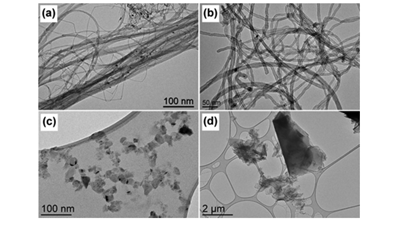Surface area as a measure for toxicity of nanoparticles

Researchers show on the example of carbon nanoparticles that the surface area is suited much more for a measure of toxicity of nanoparticles compared to traditional measures such as weight concentrations.
In the fields of toxicology and ecotoxicology, doses are commonly expressed in weight concentration for non-soluble compounds because this is very convenient experimentally. However, when it comes to nanoparticles, the weight of the nanomaterial is not a relevant parameter, especially when it is required to compare different kinds of nanoparticles – such as carbon or metals for example – because their density is very different. In a recent study, Flahaut and his collaborators show that that the usual approach based on mass concentrations fails to compare the toxicities of different engineered carbon nanoparticles (C-NPs).They report their findings in the April 28, 2016 online edition of Nano Letters ("Surface Area of Carbon Nanoparticles: A Dose Metric for a More Realistic Ecotoxicological Assessment") The most significant result of this study is that the researchers demonstrate that the surface area can be used as a relevant metric to compare the toxicity of different kinds of carbon nanoparticles, but more importantly, for the first time that it can even a priori also be used as a criterion for predicting the toxicity – at least in the team's experimental conditions – of carbon nanoparticles, ranging from 0D to 2D.
Source: Nanowerk
Image source: Flahaut et al.